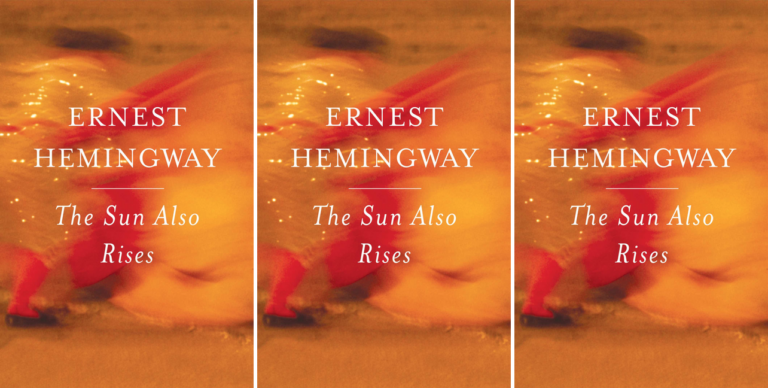Social Media in a Literary World
George Bernard Shaw once said, “The single biggest problem in communication is the illusion that it has taken place.” Although the Irish playwright wasn’t aware of social media at the time, one could argue that his observation is even more valid in a time where we think more and more in public. Instead of allowing strains of thought to saturate, seeds are thrown out to the public eye hoping to grow—or wither. Like your Twitter and Facebook newsfeeds, information is filtering through every millisecond and as easily as a thought can drift into view it can as quickly drift away.
For a newsroom, social media is the perfect platform to distribute content: news is constantly changing and article summaries can easily be slimmed down into a hundred and forty characters—just enough space to draw in a reader and “convert” them to the organization’s website. Additionally, news content is quick and easy to ingest, allowing just enough time to catch up on the next breaking news update.
But what about a literary magazine, whose ultimate goal, arguably, is for readers to take a break from the world around them, however long, to simply sit down and read? How does social media fit in here?
Sharing thoughtful writing.
For many years, the belief for online content was that only short articles would perform well on the Web. And while this still holds true, data has shown that there is also room for longform content, exemplified by the expansion of BuzzFeed’s longform department and the growth of online sites such as The Verge, Grantland, and The Awl.
However, most of these publications are covering current news and pop culture. What about the timelessness of a literary magazine—works of imagination that don’t have, as Jon Stewart remarked about the Daily Show, “the shelf life of egg salad?”
Literary magazines are, and will always be, a niche market. Even the leading publications, such as Granta and Poetry, pale in comparison to the circulation of, say, the New Yorker or The Atlantic. However, the lack of a mass market has an upside: there is no call to pander. And while we continue to hear that print is dead, literary magazines have continued to prove otherwise.
In fact, online has proven to be the perfect playground for niche publications to reach new readers and further engage with their current ones. There’s the aforementioned Poetry and Granta, of course, but let’s also acknowledge smaller and online-only publications such as Annalemma, Electric Literature, and even right here at Ploughshares, where the main focus isn’t necessarily to convert new readers and give them instant updates, but to share new writing consistent with an existing literary aesthetic.
There is no established equation for success.
Since smaller publications do have a more unified aesthetic, it’s important to uphold that when moving into the social media realm; publications shouldn’t jump into the digital waters without any inkling of strategy. Both your print and online identities don’t have to be identical, but whatever sensibility your publication embodies needs to be consciously reflected somehow online.
Post frequency, for example. Do you want a strict system for each day (e.g. six posts on Facebook, fifteen tweets, etc.), as I have at The Paris Review? Or would you rather be like John Hopkins University Press’s Brendan Coyne, posting whenever there’s something to say? Whatever you decide, make sure you pay attention to your audience to see what they respond most positively to.
Ultimately, while social media’s focus is seen as marketing and publicity, for everyone involved it can also be a potent reminder of what the original goal of the publication was and still is: to get people to read.
There is no expiration date on compelling content.

To go back to Jon Stewart’s egg salad analogy, there is no expiration date on compelling content. A Chinua Achebe poem from 1969 is just as compelling today as it was forty-four years ago. Highlighting old content in a new light is compelling, especially for literary magazines who have a monthly or quarterly publishing cycle.
However, there is a particular art to the reuse of content; simply reposting it is not enough. Whether it’s pairing archival content with artwork, as shown by my work for The Paris Review, or creating new content to reflect on the publication’s history, as New York Review of Books has beautifully done for its fiftieth anniversary, what’s vital is finding the perfect balance between not losing your audience and not losing truly good content to the digital aether.
Trust your audience.
No matter how much data research you attempt, as long as you continue to produce compelling content your readers will return—and, hopefully, share your content. This may seem like Marketing 101, but engaging your audience is still frequently overlooked by brands and publications (internet trolls aside). Accept that readers won’t “like” everything you publish—but also accept that that’s why they return. The moment you conform to readers’ interests is the moment you lose your readers—and your sensibility.
Literary magazines demand not only to be read but to be absorbed. They are an adventure of sorts, each page a new path for discovery. Remember the thrill you felt the last night you discovered a new—or old—writer? For every flashy feature report, as Paris Review editor Lorin Stein once remarked, there is a work of imagination just as stylish and urgent that can do more to refocus our picture of the world.


